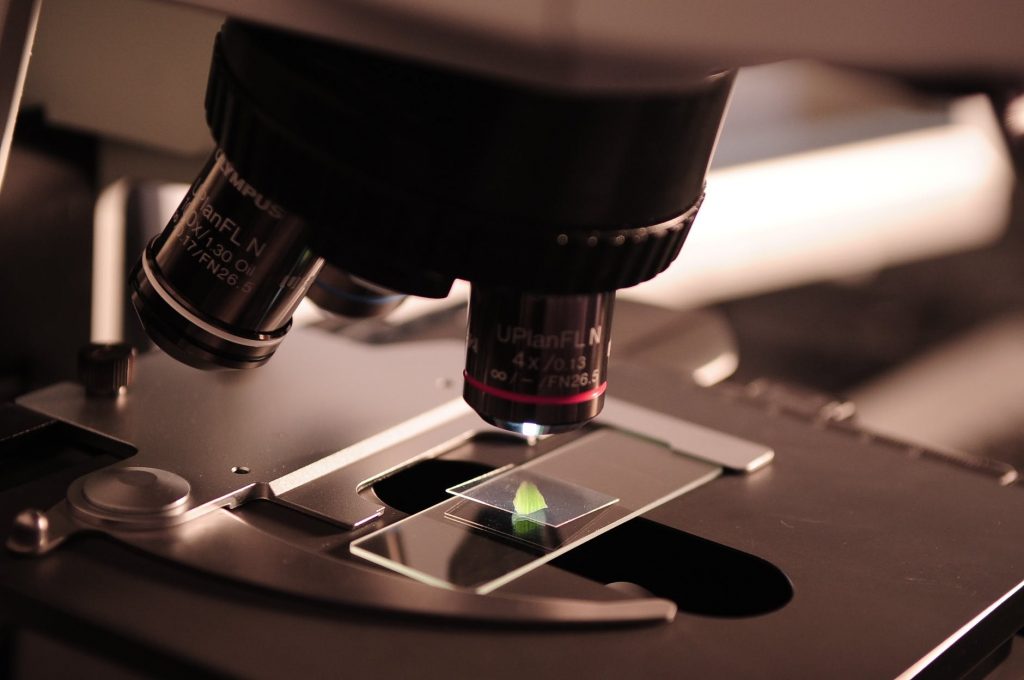Written by Dr. Colleen A. Stoyas Edited by Dr. Monica Banez
Duke University researchers have found that altered cellular metabolism and mitochondrial dysfunction play a central role in spinocerebellar ataxia type 7 (SCA7), a result that has therapeutic implications for this disease.
Spinocerebellar ataxia type 7 (SCA7) is a dominantly-inherited ataxia characterized by retinal degeneration and cerebellar atrophy. As retinal degeneration advances, patients experience progressive central vision loss. Atrophy (i.e., cell loss) in the cerebellum causes a progressive loss of balance, as the cerebellum is the region of the brain that controls coordinated movement and motor learning. SCA7 patients also experience difficulty speaking and swallowing in later stages of the disease. Symptoms can manifest at any age, though the disease is particularly aggressive when found in infants and children. SCA7 is caused by an expansion mutation in the Ataxin-7 (ATXN7) gene, which produces a protein containing extra repeats of the amino acid glutamine. These additional glutamines make the protein fold in an incorrect shape. Much like an umbrella turned inside-out, this protein, once it loses its shape, does not work in the way it’s meant to. Dr. Albert La Spada has previously shown that the ataxin-7 protein is necessary for the expression of genes that are central to the normal function of the eye – particularly, the retina. Now, his group has provided evidence that abnormal cellular metabolism underlies the brain changes observed in SCA7.
Mice whose brains carry the SCA7 mutation model the juvenile forms of this disease. Using this mouse model, the La Spada group observed changes in the network and physical size of the brain’s mitochondria. Mitochondria are the cell’s “power plants,” and are responsible for the chemical reactions (known as cellular metabolism) that generate the energy our cells need to function. Cellular metabolism is assessed by measuring metabolites, which are the products of these chemical reactions. The La Spada group’s researchers identified dysfunction in the mitochondria in SCA7 due to an underlying decrease in one specific metabolite: NAD+.
 Short for nicotinamide adenine dinucleotide, NAD+ is necessary for proper mitochondrial function. A general reduction of NAD+ occurs as humans age, as well as in a host of other neurodegenerative disorders (many of which exhibit mitochondrial dysfunction). This recent recent by Dr. La Spada and his team has shown that NAD+ is also reduced in mitochondria in SCA7.
Short for nicotinamide adenine dinucleotide, NAD+ is necessary for proper mitochondrial function. A general reduction of NAD+ occurs as humans age, as well as in a host of other neurodegenerative disorders (many of which exhibit mitochondrial dysfunction). This recent recent by Dr. La Spada and his team has shown that NAD+ is also reduced in mitochondria in SCA7.
As part of a larger spinocerebellar ataxia study in France [1], the scientists analyzed the metabolites of 13 SCA7 patients and 35 unaffected patients. In the SCA7 patients, they found alterations of many metabolites, likely leading to a reduction of NAD+. In order to look directly at changes in the cells of SCA7 patient brains, the La Spada group turned to human induced pluripotent stem cells (iPSCs). Using a technique that won the 2012 Nobel Prize, skin cells from SCA7 patients and non-affected family members were reprogrammed to stem cells, then differentiated into neuron-like cells.
These studies revealed alterations in mitochondrial size and reduced cell viability in SCA7 neuron-like cells. However, there was a large variation between cell lines from different donors. To reduce this variability, the group generated isogenic, or genetically identical, cell lines. Using CRISPR, a gene-modifying technique adapted from bacteria, they deleted the ATXN7 gene from these SCA7 patient stem cells and reintroduced either normal or mutated ataxin-7. In these modified neuronal cells, the authors discovered reduced mitochondrial NAD+ levels and bioenergetic deficits in cells with longer (i.e., more abnormal) glutamine repeats. The findings of this study show, therefore, that NAD+ reduction contributes to mitochondrial dysfunction in SCA7.
Many research groups are currently working to increase NAD+ as a treatment for age-related and neurodegenerative diseases [2]. This study from the La Spada group indicates that NAD+ could be a valuable part of future therapeutic strategies that aim to slow neurodegeneration in SCA7 patients.
Key Terms
Mitochondria: The structure within a cell that turns nutrients into chemical forms of energy to support cellular activities and processes.
Metabolite: Small chemicals that are the reactants, intermediates, or products of the chemical reactions necessary to sustain a cell’s function and survival.
NAD+ (Nicotinamide adenine dinucleotide): a metabolite necessary to drive metabolism in the cell.
Human induced pluripotent stem cells (iPSCs): Cells taken from the skin of adult patients that are re-programmed to stem cells, where they then have the capability to be differentiated into any cell of the body.
Conflict of Interest Statement
C.A. Stoyas, who wrote this piece, was previously a graduate student in the laboratory of Dr. Albert La Spada and a contributing author to this study. The editor declares no conflict of interest.
Citation of Article Reviewed
Ward, J.M. et al., Metabolic and organelle morphology defects in mice and human patients define spinocerebellar ataxia type 7 as a mitochondrial disease. Cell Reports, 2019. 26: 1189-1202. (https://www.ncbi.nlm.nih.gov/pubmed/30699348)
References
- Garali, I,.et al., A strategy for multimodal data integration: application to biomarkers identification in spinocerebellar ataxia. Briefings in Bioinformatics, 2017. 19: 1356-1369.
- Guarente, L. The resurgence of NAD+. Science, 2016. 352: 1396-1397.










